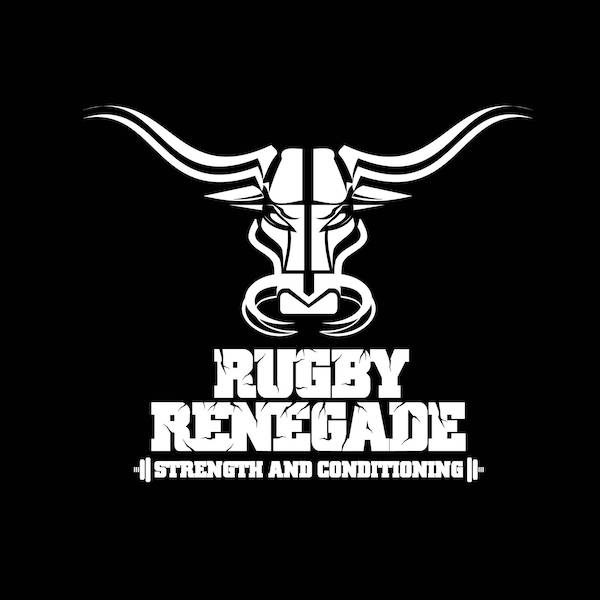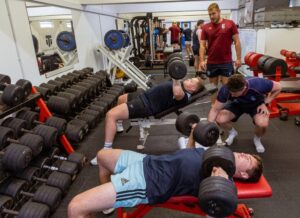To stretch or not to stretch??
A frequently asked question in the rugby world is – what is the benefit of stretching?? If you canvas opinion you are likely to find a number of conflicting opinions, which can leave us confused over what is best practice.
Like many of you out there, the first time I encountered stretching was during my junior rugby days. I can recall my coach emphasizing the importance of feeling my “groin twanging”, as we held an adductor stretch for an age!!! Whether or not these stretches were effective or not, I had no idea. At the time I simply trusted that if I didn’t do them, injury may be be lurking around the corner. For years this continued… sometimes it seemed to help, other occasions not…
Over recent times I have found myself influenced by the great work of San Francisco based Physical Therapist and Mobility WOD guru, Kelly Starrett. As a Chartered Physiotherapist this has been a natural path to follow, as I have found my practice and advice moving down the route of taking a more “movement based approach” to stretching… or my preferred term – mobility.
To me, it makes perfect sense that if you stretch a muscle to end range (static stretching), without strengthening it to function within that range – you are opening yourself up to increased injury risk. The main issue for me is that you are only addressing one part of a more complex system. You are not addressing additional fundamental issues such as motor control, joint range or joint position. In addition it does not change how your tissues interact with one another, such as the gliding of skin, fascia and musculature when mobilising.
So where do you start??
I like to follow these basic principles…
1. Movement & Motor-control
Movement and motor-control correction should guide and dictate the content of an athletes’ mobility program. A good example of assessing and correcting movement & motor control, is analysing the overhead squat. The overhead squat is a good assessment tool and can highlight a number of movement and control issues.
What are we looking for??
If for example an athlete is limited in external rotation of their hips, restricting the bottom of the squat, then it can become clear that they need to focus their mobility work around their hips. Similarly if they are unable to maintain their arms above their head, thoracic and shoulder exercises to improve mobility must be considered in their prehab program.

2. Joint Mechanics
Joint mechanics can complement movement and motor control quite nicely, with one often improving the other in many cases. For example if an athletes’ hip is too tight to externally rotate to the range required to achieve a deep squat, then hip mobility work is essential.
How do we mobilise a joint??
Primarily joint restriction is driven from tightness of a joint capsule, a fibrous sac of tissue that surrounds the joint to provide stability. When we play sports such as rugby we repeatedly occupy similar positions (think of a prop forward in a scrum). As a result, our tissues adapt and can shorten accordingly to cope with these demands. In order to affect a change in the joint capsule, we must influence the joint by creating space – this can be achieved by doing exercises using banded distraction. This is a technique founded by legendary kiwi physio Brian R Mulligan, that physiotherapists have been using for many years… but now with our prehab and rehab programs you can do it yourself with a stretch band!!!
3. Sliding-Surface Release
Once joint mechanics are being addressed, how the soft tissues slide and glide remains an important factor in overall mobility. Skin, fascia, nerve tissue and muscles all interact, therefore it is essential to ensure that the individual layers do not ahere reducing mobility.
Consider sitting for long periods of time, commuting to training or travelling long distances to an away fixture. Long periods of sustained pressure can result in adhesion and compression of the tissue layers, resulting in the sticking together of muscle bundles and fascial layers. Once you arrive at your fixture, this may be one of the reasons why you struggle to activate your gluts / hip flexors and find difficulty achieving optimal movement and function.
What can be done???
No amount of stretching will unglue the skin, fascia and deep tissue layers. Using a foam roller or trigger point ball, it is possible to create large shearing forces across the skin and muscle to un-adhere matted down tissue layers. Check out the following examples…
4. Strengthening Prehab / Rehab Exercises
The final piece in the jigsaw is to ensure that prehab strengthening exercises are incorporated to compliment the gains achieved from your mobility program. Our rehabilitation centre and daily training program offers daily mobility and prehabilitation solutions to help reduce the risk of injury from such a gruelling sport…
Supplements for joint mobilization
There are also a coupe of tweaks you can make to your diet that can make you more nimble. Consider adding fish oil and glucosamine to your breakfast. The two primary fatty acids found in Fish Oil (EPA and DHA) have been shown to decrease inflammatory and increase anti-inflammatory markers in the blood. Glucosamine has a similar effect on the joint and surrounding muscle specifically and has been shown to rebuild the bones and prevent cartilage wear and tear.




